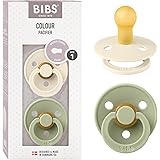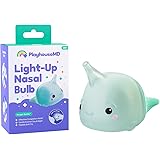It can be tough to find content that truly engages young children while also supporting their early development. Parents often seek out resources that are not only entertaining but also provide educational value. Nursery rhymes, like the classic “Humpty Dumpty” featured in the video above, offer a perfect blend of entertainment and education, captivating little minds with simple stories and catchy tunes.
While the video provides a wonderful visual and auditory experience, diving deeper into the meaning and benefits behind these timeless songs can enhance a child’s learning journey. These familiar tunes are more than just catchy; they are foundational tools for crucial developmental milestones. Let’s explore why rhymes such as “Humpty Dumpty” remain so vital in early childhood education.
More Than Just a Rhyme: The Foundational Power of Nursery Rhymes
Nursery rhymes do much more than just entertain children for a few minutes. They are powerful educational tools that lay groundwork for future academic success. Imagine if every playtime could also be a learning session; with nursery rhymes, it often is. This engagement helps children absorb information without even realizing they are learning something new.
Firstly, these simple songs significantly boost language development. Children hear new words and sentence structures in a repetitive, memorable way. Consequently, their vocabulary expands and they begin to understand the rhythm and flow of language, crucial for reading readiness.
Furthermore, nursery rhymes enhance cognitive skills. They introduce concepts like counting, sequencing, and cause-and-effect in an accessible format. For example, in “Humpty Dumpty,” children learn about sitting, falling, and the idea of things breaking. This gentle introduction to complex ideas sparks curiosity and problem-solving abilities.
Beyond language and cognition, these rhymes also support emotional and social development. Sharing a rhyme with a parent or caregiver builds strong bonds and creates shared experiences. Children often learn about different emotions and simple social scenarios through the characters and events in the stories. This shared laughter and learning fosters a sense of security and connection.
Humpty Dumpty’s Lesson: Beyond the Great Fall
The tale of “Humpty Dumpty” might seem simple, yet it holds surprising depth for young learners. The story of an egg on a wall, experiencing a great fall, offers a unique learning experience. However, the true lesson is not in the fall itself, but in the narrative and the language used.
This rhyme introduces specific vocabulary in a memorable context. Words like “sat,” “wall,” “fall,” “horses,” and “men” become associated with vivid imagery. Children hear these words repeatedly, solidifying their understanding. Moreover, the rhyme follows a clear narrative arc, which helps children grasp basic storytelling elements.
Understanding consequences is another subtle aspect of the “Humpty Dumpty” narrative. While the inability to “put Humpty together again” can seem a little sad, it presents a gentle lesson about the finality of certain actions or events. Parents can use this as an opportunity to discuss carefulness or resilience in an age-appropriate manner, focusing on the efforts made by the King’s men.
Most importantly, “Humpty Dumpty” excels in teaching rhyme and rhythm. The consistent rhyming pattern and steady beat are fundamental for phonological awareness, which is a strong predictor of reading success. Children learn to anticipate sounds and recognize patterns, skills essential for decoding words later on.
Engaging with Humpty Dumpty: Tips for Parents and Caregivers
Transforming the simple act of listening to the “Humpty Dumpty” song into an interactive learning experience is surprisingly easy. Rather than passively watching, parents can actively participate to maximize developmental benefits. This collaboration turns screen time into quality time.
- Sing Along and Add Actions: Don’t just play the song; sing it together! Encourage your child to mimic actions like sitting on an imaginary wall or making a falling motion. This kinesthetic learning helps reinforce the words and concepts.
- Read Humpty Dumpty Storybooks: Many children’s books feature the “Humpty Dumpty” rhyme. Reading the story together allows for a different kind of engagement, focusing on illustrations and turning pages. This also encourages early literacy skills.
- Creative Play with Eggs: Use a plastic or painted egg to represent Humpty Dumpty. Have your child place it on a “wall” (perhaps a block or book) and gently make it “fall.” You can then pretend to “put him together again” with tape or by simply re-placing him, emphasizing that in real life, some things can be fixed.
- Discuss the Story: Ask simple questions like, “Where was Humpty Dumpty sitting?” or “What happened to Humpty?” This encourages comprehension and verbal expression. Even if your child can’t answer yet, the act of asking plants the seeds for future conversation.
Why Cocomelon’s Humpty Dumpty Resonates with Kids
The Cocomelon rendition of “Humpty Dumpty” brilliantly captures the attention of young audiences. Their distinctive animation style and cheerful musical arrangements make traditional nursery rhymes incredibly appealing. This success stems from several key elements that are perfectly suited for early childhood engagement.
Firstly, Cocomelon utilizes familiar characters and bright, appealing visuals. Children quickly recognize JJ and his friends, creating an immediate sense of comfort and familiarity. This character recognition helps children feel more connected to the content and less overwhelmed by new information.
Moreover, the vibrant colors and clear, simple animations make the story easy to follow, even for very young toddlers. Visual cues reinforce the lyrical content, helping children associate words with actions and objects. This multi-sensory approach strengthens memory and comprehension skills significantly.
Finally, Cocomelon’s consistent, upbeat musical style is designed to be catchy and enjoyable. The cheerful tunes encourage children to sing along and move, fostering a love for music and rhythm from an early age. The “Humpty Dumpty” song, in particular, showcases how Cocomelon transforms classic content into modern, engaging experiences for a new generation.
Embracing the world of nursery rhymes, especially through beloved interpretations like Cocomelon’s “Humpty Dumpty,” provides a rich foundation for a child’s growth. These simple songs are crucial tools for developing language, cognitive skills, and emotional intelligence, proving their enduring value in early learning journeys.











